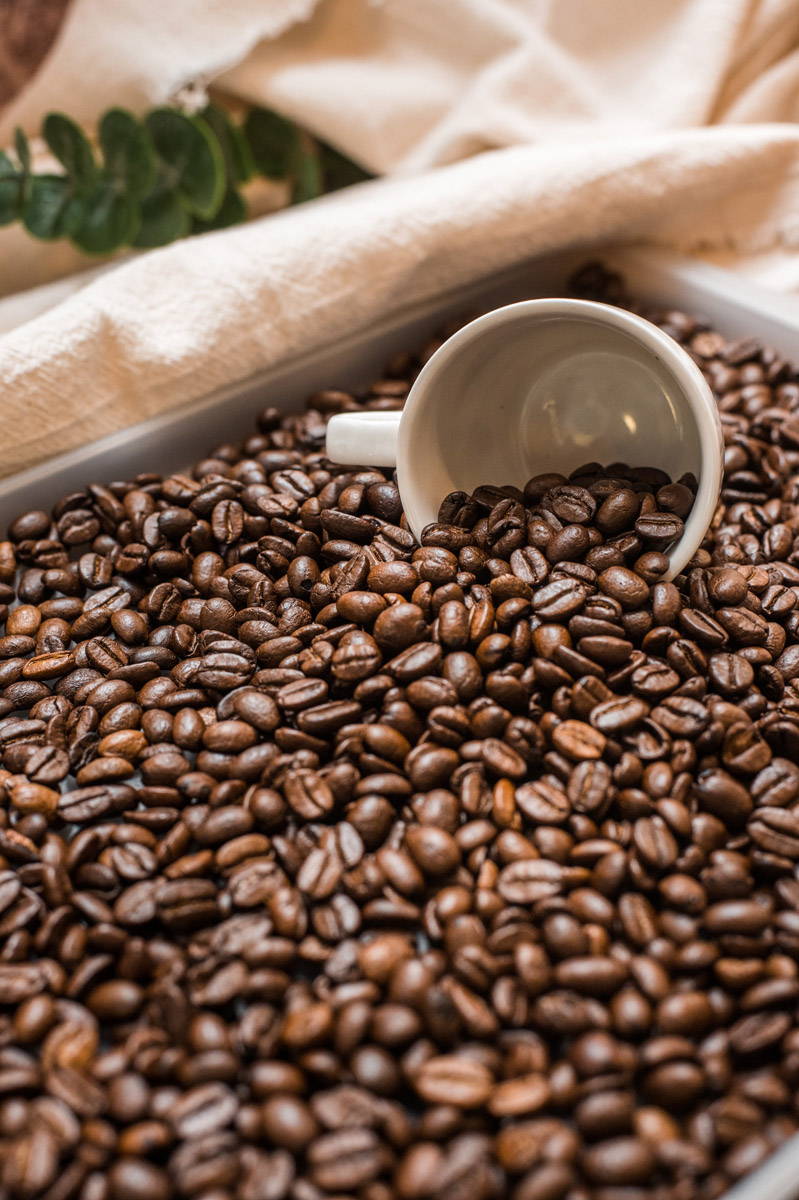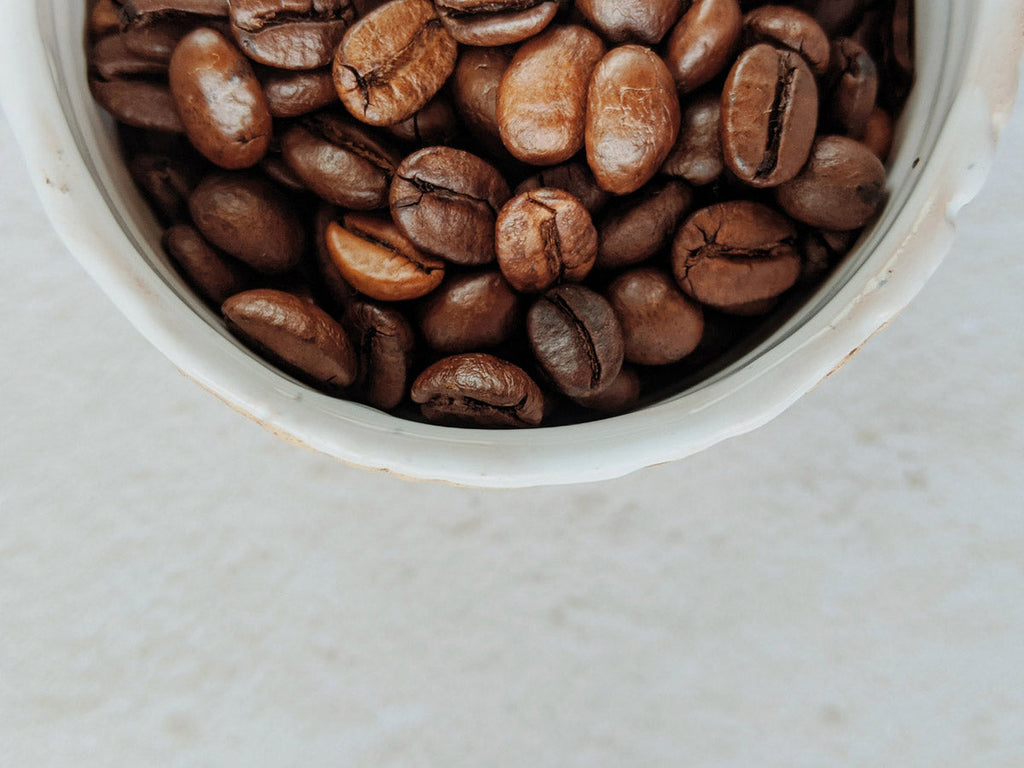Sustainable Coffee
What is Sustainable Coffee?
There are a number of ways to make coffee production more sustainable, such as incorporating best practices for crop-management and water use, using pheromone boxes instead of pesticides, composting coffee bean waste for fertilizer, using coffee hulls as fuel, shade-growing, and reforestation.
Coffee’s Environmental Impact
Coffee is a hugely popular drink all over the world, with Americans alone consuming around 146 billion cups per year. It's thought to have originated in Ethiopia, and it's now grown in more than 50 countries across South America, Central America, Asia, Africa, and the Caribbean with Brazil being the largest producer of coffee in the world.

There are a lot of steps involved in getting coffee from farm to cup. It takes four to seven years for a coffee tree to produce its first crop, and they continue to bear fruit for around 25 years. The coffee is then harvested by hand or machine, and the outer fruit (containing the green coffee bean) is removed via sun-drying or a combination of water and machinery. Next, the beans are hulled, cleaned, sorted, and exported to their next destination. According to USDA data, global coffee production was estimated at 175.5 billion 70-kilogram bags in 2020.
Once the green coffee beans have arrived at their destination, they are roasted, packaged, and shipped to their final destination.
Coffee production, like any other industry, can have an adverse effect on the environment. The Water Footprint Network reports that the global average water footprint for a 125-milliliter cup of coffee is 140 liters—the equivalent of more than two eight-minute showers. Furthermore, Ohio State University's Environmental Science Bites notes that the environmental impact of coffee extends beyond water usage.
For every cup of coffee consumed, about one square inch of rainforest is destroyed and coffee farms lead to chemical runoffs in rivers, biodiversity loss, and soil erosion.
Climate change is a major threat to coffee; according to research from the British Royal Botanic Gardens, Kew, 60 percent of wild coffee species are at risk of extinction due to the climate crisis, deforestation, and the increased severity of fungal pathogens and pests. Coffea arabica, the world’s most popular coffee, is now on the International Union for Conservation of Nature’s Red List as an endangered species.
Do you know:
1. The scientific name of coffee is Coffee arabica. The word “coffee” comes from the word “qahwah,” Arabic for “wine of the bean.” Other scientific names for coffee include Rabbit-ear. Moon, Desert’s delight, and Vinterbärnsten (Winter’s aster).
2. The majority of caffeine is found in the coffee bean’s skin, not the inner bean. It’s also found in smaller amounts in the seeds of fruits, leaves, and nuts. Surveys also detect caffeine naturally in guarana, mate and kola nuts. artificial sweeteners, pregnancy tests, sports drinks, and sensors for monitoring gunfire and earthquakes. Will Grand Swiss-Army Knife for Coffee-Lovers deliver on its promise and ace the Swiss Army Knife? What does it take to cut a cake in.
Once the green coffee beans have arrived at their destination, they are roasted, packaged, and shipped to their final destination.
Coffee production, like any other industry, can have an adverse effect on the environment. The Water Footprint Network reports that the global average water footprint for a 125-milliliter cup of coffee is 140 liters—the equivalent of more than two eight-minute showers. Furthermore, Ohio State University's Environmental Science Bites notes that the environmental impact of coffee extends beyond water usage.
For every cup of coffee consumed, about one square inch of rainforest is destroyed and coffee farms lead to chemical runoffs in rivers, biodiversity loss, and soil erosion.
Climate change is a major threat to coffee; according to research from the British Royal Botanic Gardens, Kew, 60 percent of wild coffee species are at risk of extinction due to the climate crisis, deforestation, and the increased severity of fungal pathogens and pests. Coffea arabica, the world’s most popular coffee, is now on the International Union for Conservation of Nature’s Red List as an endangered species.
Do you know:
1. The scientific name of coffee is Coffee arabica. The word “coffee” comes from the word “qahwah,” Arabic for “wine of the bean.” Other scientific names for coffee include Rabbit-ear. Moon, Desert’s delight, and Vinterbärnsten (Winter’s aster).
2. The majority of caffeine is found in the coffee bean’s skin, not the inner bean. It’s also found in smaller amounts in the seeds of fruits, leaves, and nuts. Surveys also detect caffeine naturally in guarana, mate and kola nuts. artificial sweeteners, pregnancy tests, sports drinks, and sensors for monitoring gunfire and earthquakes. Will Grand Swiss-Army Knife for Coffee-Lovers deliver on its promise and ace the Swiss Army Knife? What does it take to cut a cake in.
OTHER GOOD READS
Sustainable Coffee What is Sustainable Coffee? There are a number of ways to make coffee production more sustainable, such as...
Washed Coffee What is Processing? Coffee is a fruit that grows on trees in the form of coffee cherries. These...
GRAB SOME BEANS
We Live for That First Cup
FIND US
50 Maple Street
Croton on Hudson NY
HOURS
Monday: 6am-4pm
Tuesday-Friday: 6am-5pm
Saturday: 7am-4pm
Sunday: 8am-2pm
CONTACT
914-810-7248
hello@matterscoffee.com

